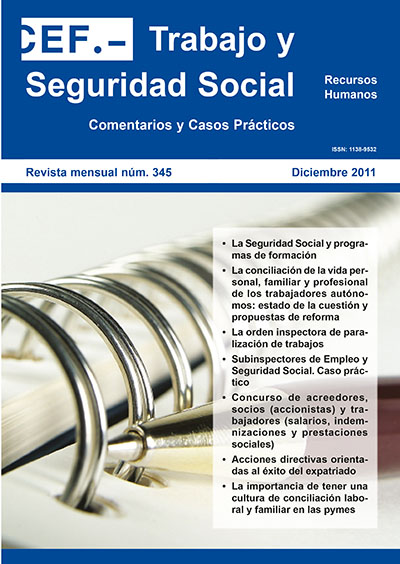Contest of creditors, partners (shareholders) and workers (salaries, allowances and social benefit)
[Commentary to the Judgment of the Court of Justice of the European Union, room eighth, of February 10, 2011, issues C-30/10, Lotta Andersson]
DOI:
https://doi.org/10.51302/rtss.2011.5079Keywords:
bankruptcy, salaried employed worker, senior management personnel, wage credits, compensation, FOGASAAbstract
The story continues, but the model of industrial relations has been petrified in which arose the socaire of the Industrial Revolution. That circumstance also comes the hardening of the social thought of large sections of the population in ideologies of the past, doomed to populism and reactionary despotism. This explains the historical gap which is the maintenance of the category of «employees employed». The model and change of paradigm in the intersubjective relations arising on human work, adjusting it to the scientific, technological, economic and moral development corresponding to the moment that we live is urgent. Meanwhile the «salaried employed worker» will continue assuming the risk of business, just in their adverse consequences, but not in the favourable, which of course exist and are extremely broad in the most effective economic system that has ever existed, the system of social market economy or modern capitalist system.


















